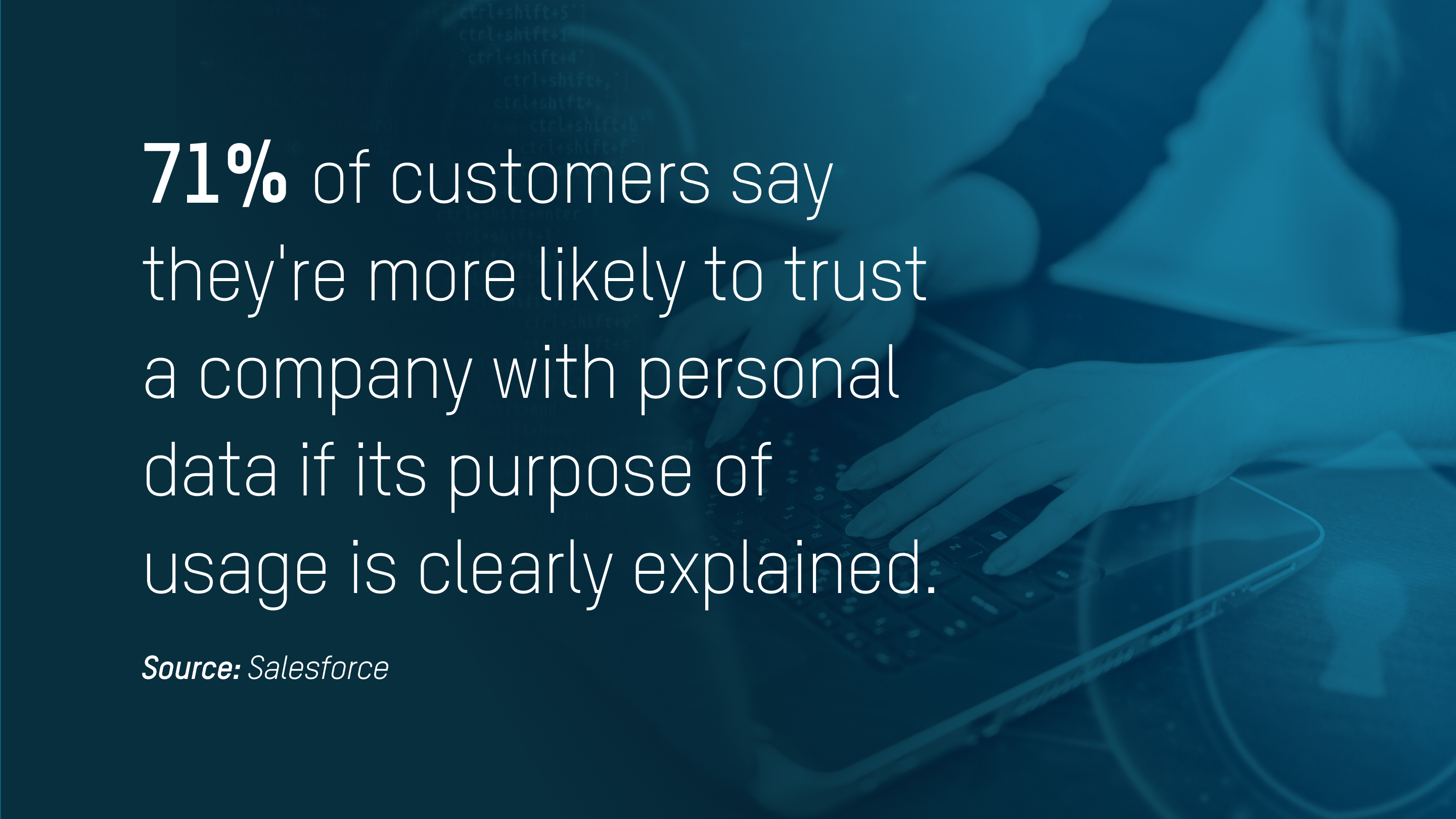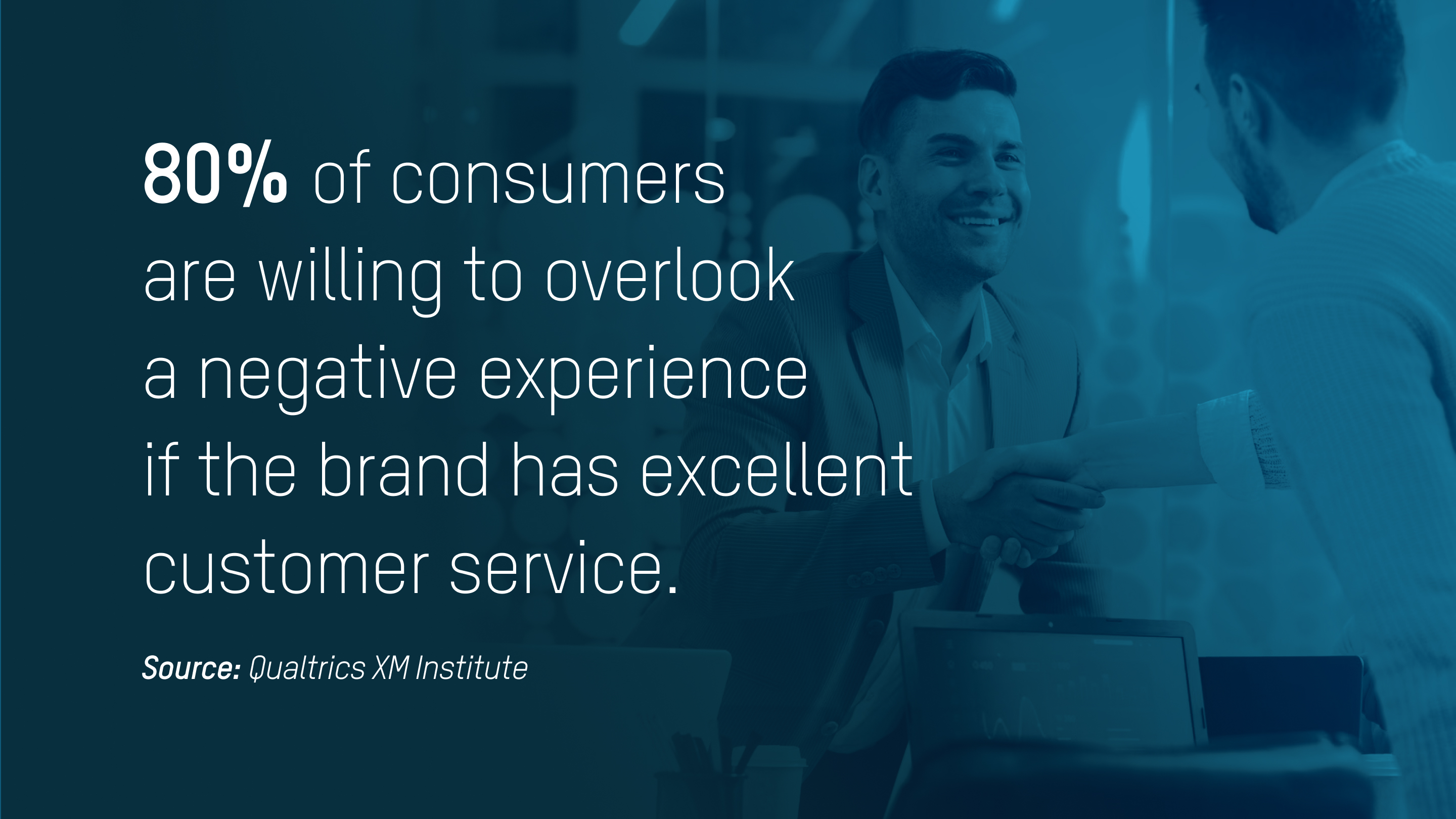Trust is key to driving customer loyalty. When consumers trust a brand, they're more likely to choose it over competitors (even when cheaper and potentially better options exist).
Confidence is also a byproduct of trust. When customers trust a brand, they feel secure in their decision to make a purchase—this confidence may translate into repeat business for your brand.
So, how do you build trust with consumers? While building consumer trust won’t happen overnight, there are actionable steps you can take right now. From enhancing your customer support to safeguarding customer data to incentivizing your customer interactions, here are five best practices to follow.
#1 Data privacy: transparency
Customers want to feel secure, especially about their personal information. One of the best ways to earn customer trust is by being careful with their data.

It's your responsibility to keep whatever customers share with you safe. To gain their trust, you must be extremely responsible when handling and using customer data. This means following basic rules about data privacy, like GDPR (General Data Protection Regulation), CCPA (California Consumer Privacy Act), and CAN-SPAM Act of 2023 (Controlling the Assault of Non-Solicited Pornography And Marketing).
Being completely open about how you collect, use, and store customer data is crucial for building customer trust. Doing so adds to a company's credibility given that 86% of customers want more protection and control over their data (Cisco, 2021). Improving customer engagement involves carefully considering how businesses follow ethical practices when managing customer data, not just focusing on the quality of customer interactions.
#2 Reward system: incentivizing
Rewards are an excellent way to appeal to existing customers and attract new ones. There are few better ways to increase customer engagement and drive customer loyalty than through incentives. When businesses use reward systems, such as loyalty programs, about 77% of people are likely to engage and make a purchase from them.
This is because nearly 70% of customers think it's important to build a good connection with brands (Bond, 2018). Even though there might be some costs associated with giving incentives, the long-term benefits from increased customer retention and sales often outweigh the expenses.
#3 Customer support: dependability
In business, mistakes are inevitable. But part of what distinguishes one brand from another is their approach to customer service.

Customers prefer brands that are reliable and know how to effectively address their needs. In fact, 68% of customers say they'd happily spend more on products and services from a brand with excellent customer service. An astounding 80% of customers are even willing to overlook occasional blunders when they get exceptional customer support (Qualtrics XM Institute).
But great customer support doesn’t end with the first purchase; it should remain consistent throughout the entire customer relationship. This is a great way to improve customer retention rates. Brands that consistently deliver exceptional post-sale support report a boost in customer retention, with approximately 81% of their customers showing interest in making repeat purchases (Zendesk, 2022).
#4 Customer feedback: proactiveness
Don't wait for things to go wrong before you act on them; learn to anticipate problems before they happen. Customer feedback is a great way to help with that.
Around 78% of consumers prefer brands that actively ask for customer feedback, whether that’s through surveys, ratings, reviews, or testimonials (Microsoft, 2017). This proactive approach resonates with consumers because it makes them feel acknowledged and that their opinions are valued.
In the same study, it was found that 63% prefer businesses that use customers to improve their products, services, and internal processes. For the majority of consumers, this is what drives them to remain loyal to a brand. For businesses that want to drive brand loyalty and harness long-lasting customer relationships, adopting a customer engagement strategy rooted in a sense of preparedness is the way to go.
#5 Audience-centric approach: personalization
When consumers receive information that's relevant to them, they are more likely to trust the brand because it shows a deep understanding of what they want. Approximately 69% of consumers actively seek personalization from brands, which can take various forms, such as personalized product recommendations, tailored content feeds, targeted ads, and dynamic website content (Segment).
Personalization is such a powerful driver of consumer trust because it creates an emotional connection between the brand and the consumer. In a way, it makes consumers feel valued and recognized (which is a basic human need), deepening the level of connection and trust they have with them. But of course, brands need an in-depth understanding of their consumers through data in order to deliver the most relevant content and experience to their consumers.
By following these 5 simple yet effective actions, your brand can improve customer relationships, build trust, and drive more business in the future.



